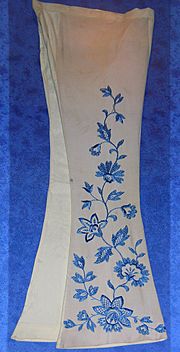Obsolescence facts for kids
Obsolescence means something is becoming old-fashioned or no longer useful. It's like when your old phone can't run the newest apps anymore. It's not broken, but it's not as good as newer options.
This often happens when a new product comes out that is much better. The old item might still work, but people prefer the new one. When something is "obsolete," it means it's already out of use or thrown away. Usually, things become less popular over time before they become fully obsolete.
Contents
Why Things Become Obsolete
New technology is always being created and sold very quickly. This changes how products are made and what is available in stores. Sometimes, the parts needed to make a product are no longer made. This is a big problem called obsolescence.
This issue is most common with electronics. For example, computer chips might stop being made long before the products that use them are no longer needed. But obsolescence isn't just for electronics. It can happen to materials, clothes, and even mechanical parts. It can also happen to computer programs, rules, and even human skills. It's important to manage obsolescence to avoid big costs.
Different Kinds of Obsolescence
Technical Obsolescence
Technical obsolescence happens when a new product or technology takes the place of an older one. People prefer to use the newer, better technology.
Think about these examples:
- Bronze tools replaced flint tools a long time ago.
- DVDs replaced videocassettes for watching movies.
- The telephone replaced the telegraph for sending messages.
On a smaller scale, a specific product can become obsolete when a newer version comes out. This happens a lot in the computer world. For instance, central processing units (CPUs) often become obsolete when faster ones are made.
Sometimes, old technology doesn't completely disappear. It might still be useful for certain things. For example, transistors replaced vacuum tubes in TVs and radios. But vacuum tubes were still used for powerful transmitters because transistors weren't strong enough yet.
Products can also become obsolete if the parts needed to make or fix them are no longer available. Many computer chips are not made anymore because the technology is too old. Or, the company that made them might have closed. It's usually not worth making an old product again because newer, better options exist.
Some products become obsolete because other related products change. For example, buggy whips became useless when people started driving cars instead of horse-drawn buggies.
Functional Obsolescence
Items become functionally obsolete when they can no longer do their job well. For example, an old airplane might not be able to drop modern bombs effectively against today's air defenses. It's just not useful for that task anymore.
Companies usually stop supporting old products once they become obsolete. It costs too much to keep making parts for a small number of users. This makes it hard to find spare parts or people who know how to fix old technology. Because of this, it becomes very expensive to keep old technology working.
Architectural Obsolescence
This type of obsolescence refers to buildings. It means a building loses its value because newer, better buildings are available. For example, hotels might become obsolete faster than banks. This is because hotel styles and what people want in a hotel change more often.
Planned Obsolescence
Sometimes, companies design products to wear out after a certain time. This is called planned obsolescence. The goal is to make people buy new products more often. For example, an appliance might be made to break down within five years. This encourages customers to replace it quickly.
Inventory Obsolescence
Inventory obsolescence happens when stores have too much stock of products that don't sell. If products sit in a warehouse for too long, they might become obsolete. This can hurt a company's money flow. Companies check their stock regularly to see which items are not selling well.

Style Obsolescence
When a product is no longer popular because its fashion style is outdated, its style is obsolete. Think about flared leg jeans. They might still be perfectly good pants, but they are not in style right now.
However, fashion trends often come back! So, stylistically obsolete products might become popular again. For example, "acid-wash" jeans were popular in the 1980s, went out of style, and then became popular again in the 2000s.
Obsolescence Management
Obsolescence management is about dealing with the effects of things becoming obsolete. This can include buying a lot of a product's parts before they are no longer made. It also involves keeping an eye on when things might become obsolete.
See also
 In Spanish: Obsolescencia para niños
In Spanish: Obsolescencia para niños
- Commodification
- Deprecation
- Disruptive innovation
- DMSMS
- List of archaic technological nomenclature
- List of obsolete technology
- Moore's law
- Planned obsolescence
- Sustainable design

